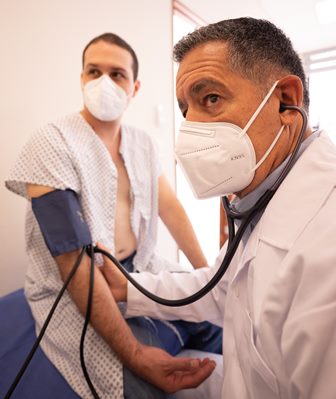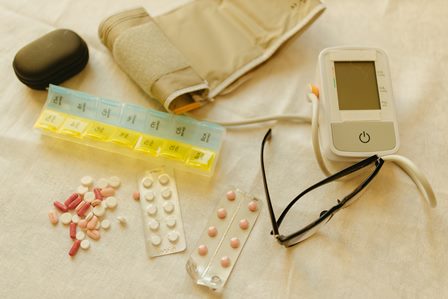Monitoring blood pressure using palpation and/or sphygmomanometer
PURPOSE: To obtain baseline data for diagnosis and treatment
Compare with subsequent changes that may occur during the care of patients
To assist in evaluating the status of the patient’s blood volume, cardiac output, and vascular system
Evaluate the patient’s response to changes in physical condition as a result of treatment with fluids or medications
Blood Pressure Procedure
1. Perform hand hygiene
2. Gather all equipment. Cleanse the stethoscope’s earpieces and diaphragm with an alcohol swab
3. Check the patient’s identification. Explain the purpose and procedure to the patient
4. Have the patient rest at least 5 minutes before measurement
5. Determine the previous baseline blood pressure if available from the patient’s record
6. Identify factors likely to interfere with the accuracy of blood pressure measurement: exercise, coffee, and smoking
7. Setting the position:
a. Assist the patient in a comfortable position. Be sure the room is warm, quiet, and relaxing
b. Support the selected arm. Turn the palm upward
c. Remove any constrictive clothing
8. Checking the brachial artery and wrapping the cuff:
a. Palpate brachial artery
b. Center the cuff’s bladder approximately 2.5 cm (1 inch) above the site where you palpated the brachial pulse
c. Wrap the cuff snugly around the patient’s arm and secure the end
d. Check the manometer whether if it is at level with the patient’s heart
9. Measure blood pressure by a two-step method:
A. Palpatory Method
a. Palpate brachial pulse distal to the cuff with fingertips of the non-dominant hand
b. Close the screw clamp on the bulb
c. Inflate the bulb while still checking the pulse with the other hand
d. Observe the point where a pulse is no longer palpable
e. Inflate cuff to pressure 20-30 mm Hg above the point at which pulse disappears
f. Open screw clamp, deflate the cuff fully and wait for 30 seconds
B. Auscultation
a. Position the stethoscope’s earpieces comfortably in your ears (turn tips slightly forward). Be sure sounds are clear, not muffled
b. Place the diaphragm over the Patient’s brachial artery. Do not allow chest piece to touch cuff or clothing
c. Close the screw clamp on the bulb and inflate the cuff to a pressure 30 mm Hg above the point where the pulse had disappeared
d. Open the clamp and allow the aneroid dial to fall at the rate of 2 to 3 mmHg per second.
e. Note the point on the dial when the first clear sound is heard. The sound will slowly increase in intensity
f. Continue deflating the cuff and note the point where the sound disappears. Listen for 10 to 20 mm Hg after the last sound
g. Release any remaining air quickly in the cuff and remove it
h. If you must recheck the reading for any reason, allow a minute interval before taking blood pressure again
10. Assist the patient in a comfortable position.
11. Wash your hands
12. Record blood pressure in the patient’s chart. Sign on the chart. Report any findings to senior staff and doctor
13. Replace the instruments to  the proper place and discard waste as per policy
the proper place and discard waste as per policy
Documentation of blood pressure
Document the temperature, pulse, respiration & Blood Pressure in the clinical chart. Record BP and site assessed on the clinical chart
Record any signs or symptoms of BP alternations in narrative form in the nurse’s notes.
Report abnormal findings to senior nurses or doctors.
